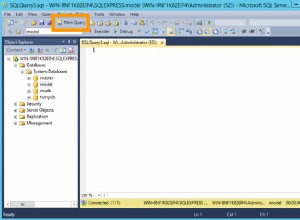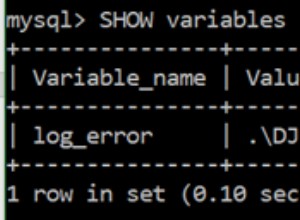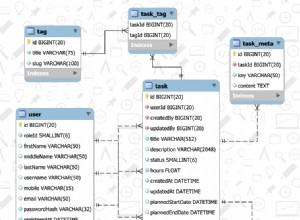Parte del problema es que tiene datos desnormalizados en varias columnas que desea pivotar. Idealmente, debería considerar arreglar la estructura de su tabla para que sea más fácil de mantener y consultar. Si no puede corregir la estructura de la tabla, primero debe quitar el pivote de las columnas y luego aplicar PIVOT para obtener el resultado final.
El proceso UNPIVOT tomará las múltiples columnas y las convertirá en múltiples filas. Dependiendo de su versión de SQL Server, hay algunas formas de hacerlo. Puede usar la función UNPIVOT o, dado que está usando SQL Server 2008, puede usar CROSS APPLY con la cláusula VALUES para anular el pivote.
El código CROSS APPLY/VALUES será:
select t.producttitle, c.col, c.value
from tmpData t
cross apply
(
values (abvrMonthName, MonthAvg), (abvrMonthNameCount, MonthCount)
) c (col, value)
Consulte SQL Fiddle con demostración . Esto toma sus múltiples columnas y coloca los datos en un formato similar a este:
| PRODUCTTITLE | COL | VALUE |
-------------------------------
| Product 1 | Dec | 0 |
| Product 1 | Dec# | 0 |
| Product 1 | Nov | 0 |
| Product 1 | Nov# | 0 |
| Product 1 | Oct | 0 |
| Product 1 | Oct# | 0 |
| Product 1 | Sep | 0 |
| Product 1 | Sep# | 0 |
Una vez que los datos estén en este formato, puede aplicar PIVOT a los valores en col que contiene los nombres de los meses:
select producttitle, jan, [jan#], feb, [feb#], mar, [mar#], apr, [apr#],
may, [may#], jun, [jun#], jul, [jul#], aug, [aug#],
sep, [sep#], oct, [oct#], nov, [nov#], dec, [dec#]
from
(
select t.producttitle, c.col, c.value
from tmpData t
cross apply
(
values (abvrMonthName, MonthAvg), (abvrMonthNameCount, MonthCount)
) c (col, value)
) d
pivot
(
sum(value)
for col in (jan, [jan#], feb, [feb#], mar, [mar#], apr, [apr#],
may, [may#], jun, [jun#], jul, [jul#], aug, [aug#],
sep, [sep#], oct, [oct#], nov, [nov#], dec, [dec#])
) piv;
Consulte SQL Fiddle con demostración . Esto da un resultado:
| PRODUCTTITLE | JAN | JAN# | FEB | FEB# | MAR | MAR# | APR | APR# | MAY | MAY# | JUN | JUN# | JUL | JUL# | AUG | AUG# | SEP | SEP# | OCT | OCT# | NOV | NOV# | DEC | DEC# |
--------------------------------------------------------------------------------------------------------------------------------------------------------------------------------
| Product 1 | 5 | 2 | 5 | 1 | 5 | 4 | 5 | 6 | 4.44 | 9 | 5 | 1 | 0 | 0 | 0 | 0 | 0 | 0 | 0 | 0 | 0 | 0 | 0 | 0 |
| Product 2 | 0 | 0 | 0 | 0 | 0 | 0 | 4.33 | 3 | 4.67 | 3 | 5 | 1 | 0 | 0 | 0 | 0 | 0 | 0 | 0 | 0 | 0 | 0 | 0 | 0 |
| Product 3 | 4.6 | 5 | 4.75 | 8 | 4.75 | 8 | 4 | 6 | 5 | 6 | 5 | 3 | 0 | 0 | 0 | 0 | 0 | 0 | 0 | 0 | 0 | 0 | 0 | 0 |




